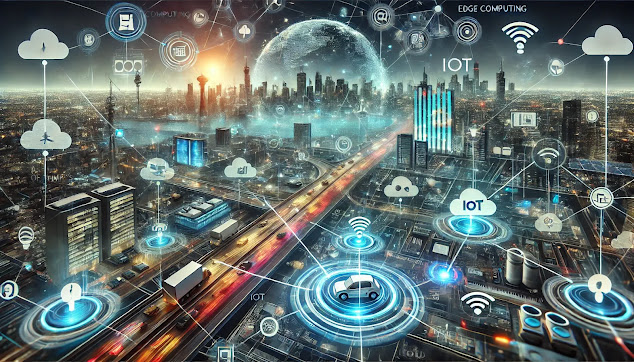Edge Computing: Transforming IoT
.%20Show%20a%20dynamic%20scene%20with%20various%20IoT%20devices%20like%20smart%20home%20.webp)
Introduction to Edge Computing and IoT Edge computing refers to the practice of processing data near the edge of the network, where the data is generated, rather than relying solely on centralized data-processing warehouses or cloud-based systems. This approach contrasts with traditional cloud computing, where data is transmitted to centralized data centers for processing and analysis. The Internet of Things (IoT) consists of a network of interconnected devices, sensors, and systems that communicate and exchange data to perform various tasks and provide valuable insights. IoT devices are deployed across various sectors, including smart homes, industrial automation, healthcare, transportation, and more. Impact of Edge Computing on IoT Improved Response Times One of the primary benefits of edge computing in IoT is the significant improvement in response times. By processing data closer to the source, edge computing reduces latency, which is the time it takes for data to travel from the...
.%20The%20image%20features%20a%20network%20of%20interconnect.webp)
